Table of Contents
Maintaining a healthy weight is important for overall well-being. One of the simplest ways to check if you are at a healthy weight is by using a height and weight chart.
These charts help you understand if your weight is appropriate for your height, offering a quick glimpse into your general health.
What Is a Height and Weight Chart?
A height and weight chart is a tool that helps determine your ideal weight based on your height. The chart typically includes categories like underweight, normal weight, overweight, and obese.
By finding your height on one axis and your weight on the other, you can see where you fall in terms of these categories.
How to Use the Chart:
- Measure your height accurately.
- Weigh yourself to get your current weight.
- Find your height on the chart and match it with your weight.
- The point where they meet will indicate your category (e.g., normal, overweight).
Understanding BMI and Its Importance
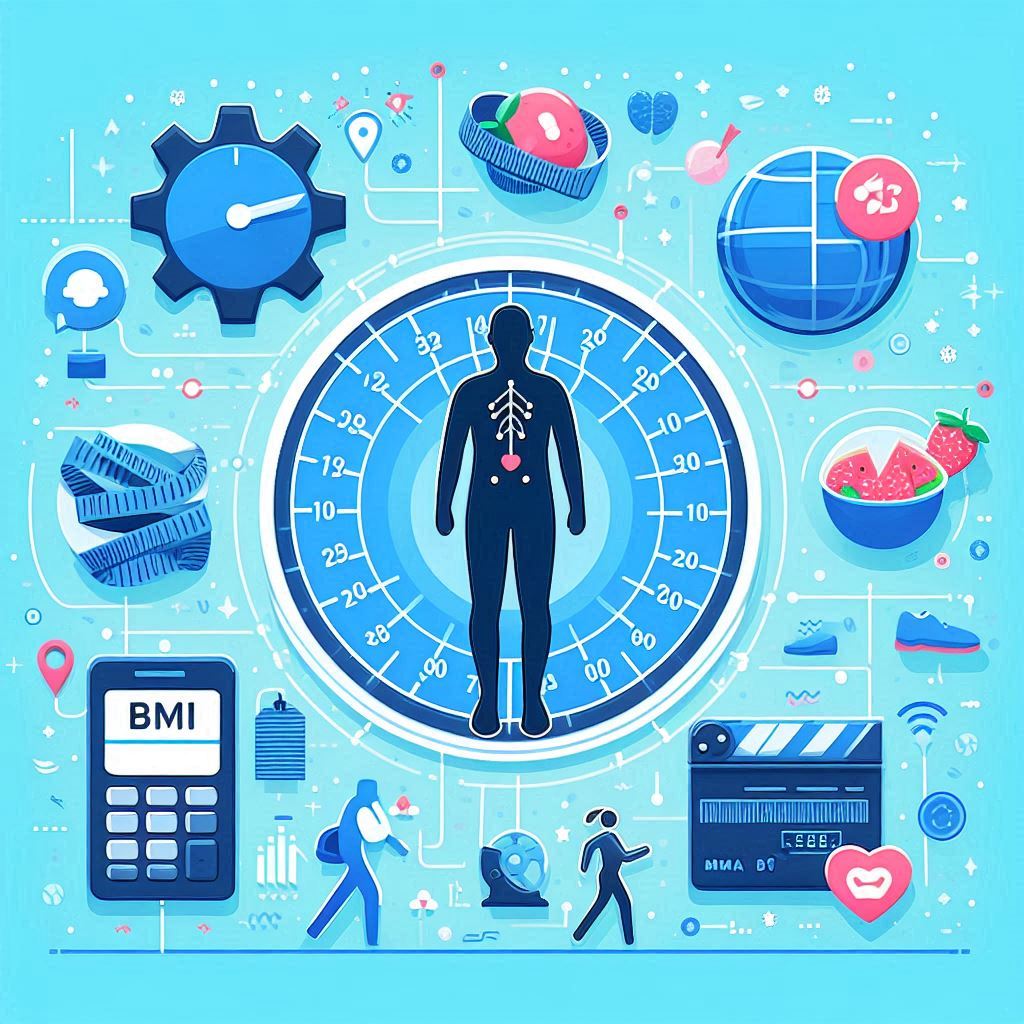
While height and weight charts are useful, they don’t tell the whole story. Body Mass Index (BMI) is another important measure. BMI is a calculation that uses your height and weight to estimate how much body fat you have.
How to Calculate BMI:
- BMI Formula: BMI = Weight (kg) / (Height (m)²)
- For example, if you weigh 70 kg and are 1.75 m tall, your BMI would be 22.86.
Interpreting BMI Results:
- Underweight: BMI less than 18.5
- Normal Weight: BMI 18.5 – 24.9
- Overweight: BMI 25 – 29.9
- Obesity: BMI 30 and above
Factors Affecting Ideal Weight
Your ideal weight isn’t just a number on a chart. It’s influenced by several factors:
- Age: As you age, your metabolism slows down, and you may gain weight more easily.
- Gender: Men and women have different body compositions. Men typically have more muscle mass, while women have more body fat.
- Muscle Mass: Muscle weighs more than fat, so athletes or those with higher muscle mass may weigh more without being overweight.
- Body Frame: A person with a larger body frame may weigh more and still be healthy.
Why Other Health Metrics Matter

While BMI and height-weight charts are common tools, they don’t account for all health risks. Other important metrics include:
Waist-to-Hip Ratio (WHR)
The WHR compares the circumference of your waist to that of your hips. It’s a good indicator of fat distribution in the body.
- How to Measure: Measure your waist at its narrowest point and your hips at their widest point. Divide the waist measurement by the hip measurement.
- Healthy WHR: A WHR of less than 0.9 for men and less than 0.85 for women is considered healthy.
Waist-to-Height Ratio
This metric measures how your waist size compares to your height. It’s useful for identifying risk factors related to obesity.
- How to Measure: Measure your waist and divide it by your height.
- Healthy Ratio: Your waist should be less than half your height. For example, if you are 6 feet tall (72 inches), your waist should be less than 36 inches.
Body Fat Percentage
This is the percentage of your body weight that comes from fat. While more challenging to measure accurately at home, it gives a clearer picture of your health than BMI alone.
Methods to Measure Body Fat Percentage:
- Skinfold Calipers: Measures the thickness of skinfolds at various body sites.
- Bioelectrical Impedance Analysis (BIA): Uses a small electrical current to estimate body fat.
- Dual-Energy X-ray Absorptiometry (DEXA): A scan that measures bone density and body fat.
- Hydrostatic Weighing: Measures body density by submerging you in water.
Height and Weight Charts for Different Groups

Different height and weight charts are used for men, women, and children, as each group has unique health considerations.
Height and Weight Chart for Men
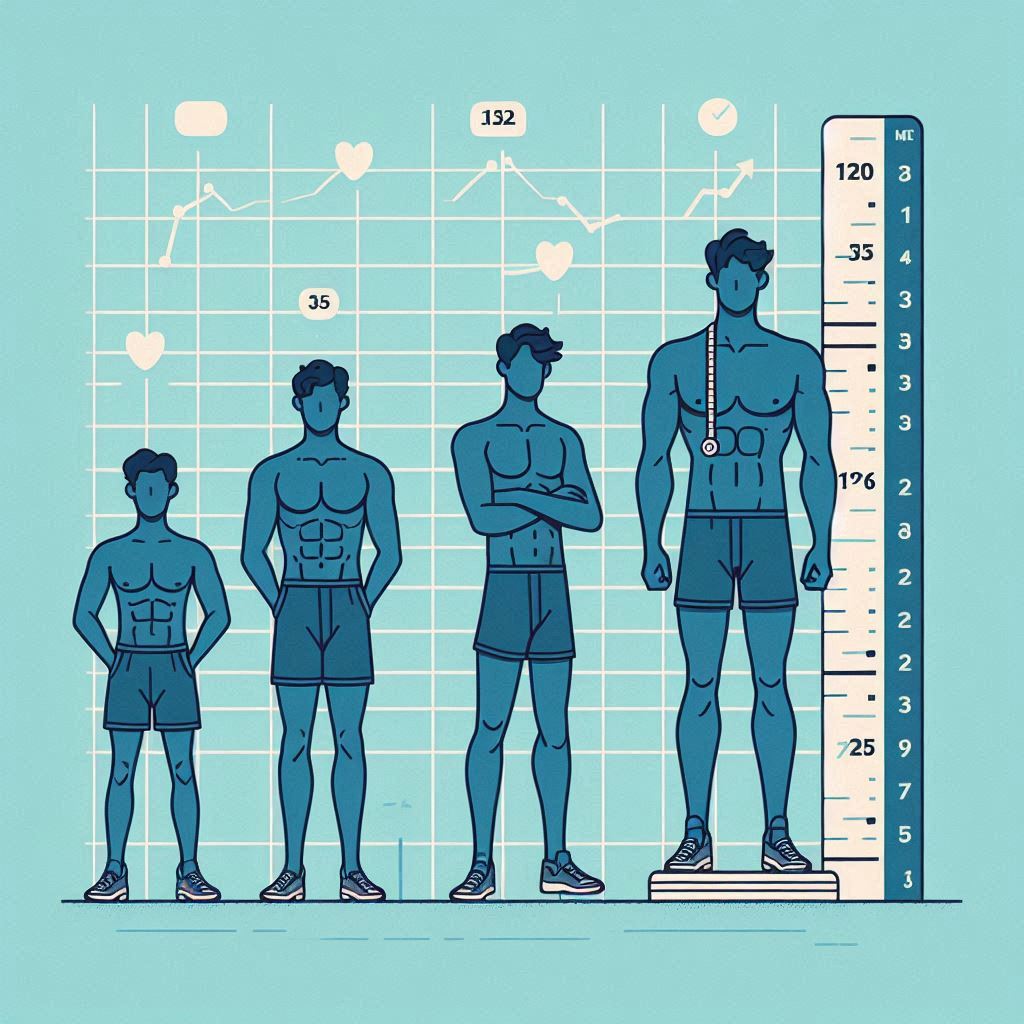
Men typically have more muscle mass than women, which influences their ideal weight.
| Height | Weight (Normal Range) |
|---|---|
| 5’0″ | 95-117 lbs |
| 5’5″ | 114-144 lbs |
| 5’10” | 132-173 lbs |
| 6’0″ | 140-183 lbs |
Height and Weight Chart for Women

Women usually have more body fat than men, which is reflected in their ideal weight range.
| Height | Weight (Normal Range) |
|---|---|
| 5’0″ | 90-110 lbs |
| 5’5″ | 110-140 lbs |
| 5’10” | 130-160 lbs |
| 6’0″ | 140-170 lbs |
Height and Weight Chart for Children
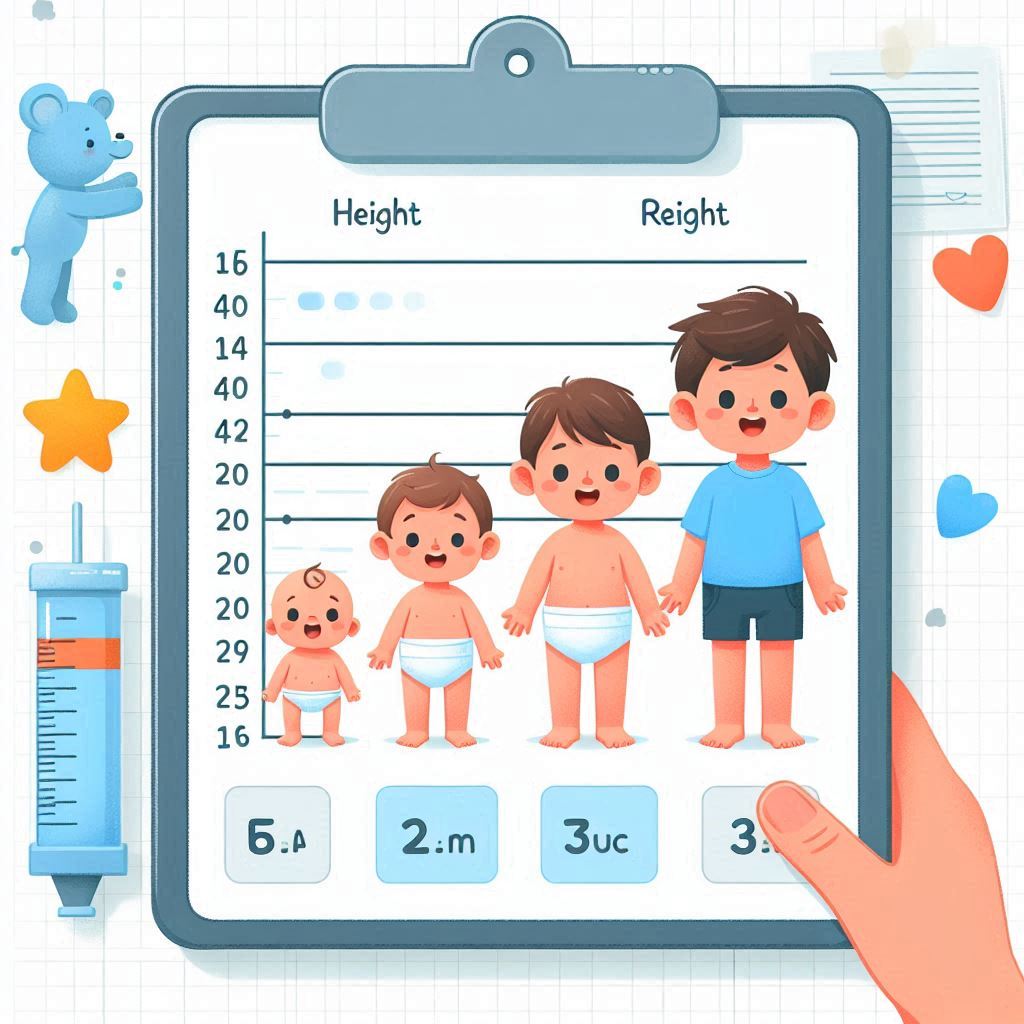
Children’s ideal weight depends on their growth stage, and it’s important to consider their age and developmental milestones.
| Age | Height | Weight (Normal Range) |
|---|---|---|
| 2-3 | 33-38 inches | 25-38 lbs |
| 4-6 | 39-47 inches | 36-60 lbs |
| 7-9 | 48-57 inches | 44-80 lbs |
| 10-12 | 50-63 inches | 54-115 lbs |
Setting Realistic Weight Goals
If your height and weight chart or BMI indicates that you are underweight, overweight, or obese, setting realistic weight goals is crucial.
Tips for Weight Management:
- Consult with a Professional: Speak with a doctor or a certified fitness expert to develop a personalized plan.
- Balanced Diet: Focus on eating a diet rich in fruits, vegetables, whole grains, and lean proteins.
- Regular Exercise: Aim for at least 150 minutes of moderate aerobic activity or 75 minutes of vigorous activity each week.
- Track Progress: Regularly monitor your weight and adjust your plan as needed.
Diet Tips:
- Portion Control: Be mindful of portion sizes to avoid overeating.
- Hydration: Drink plenty of water throughout the day.
- Healthy Snacks: Choose fruits, nuts, or yogurt over sugary or processed snacks.
- Limit Sugars and Fats: Reduce intake of sugary drinks, desserts, and high-fat foods.
Exercise Tips:
- Cardio Workouts: Activities like walking, running, and swimming help burn calories.
- Strength Training: Build muscle with exercises like weight lifting or resistance bands.
- Flexibility Exercises: Yoga and stretching improve flexibility and reduce injury risk.
- Consistency: Stick to a regular exercise routine for the best results.
Benefits of Using Height and Weight Charts
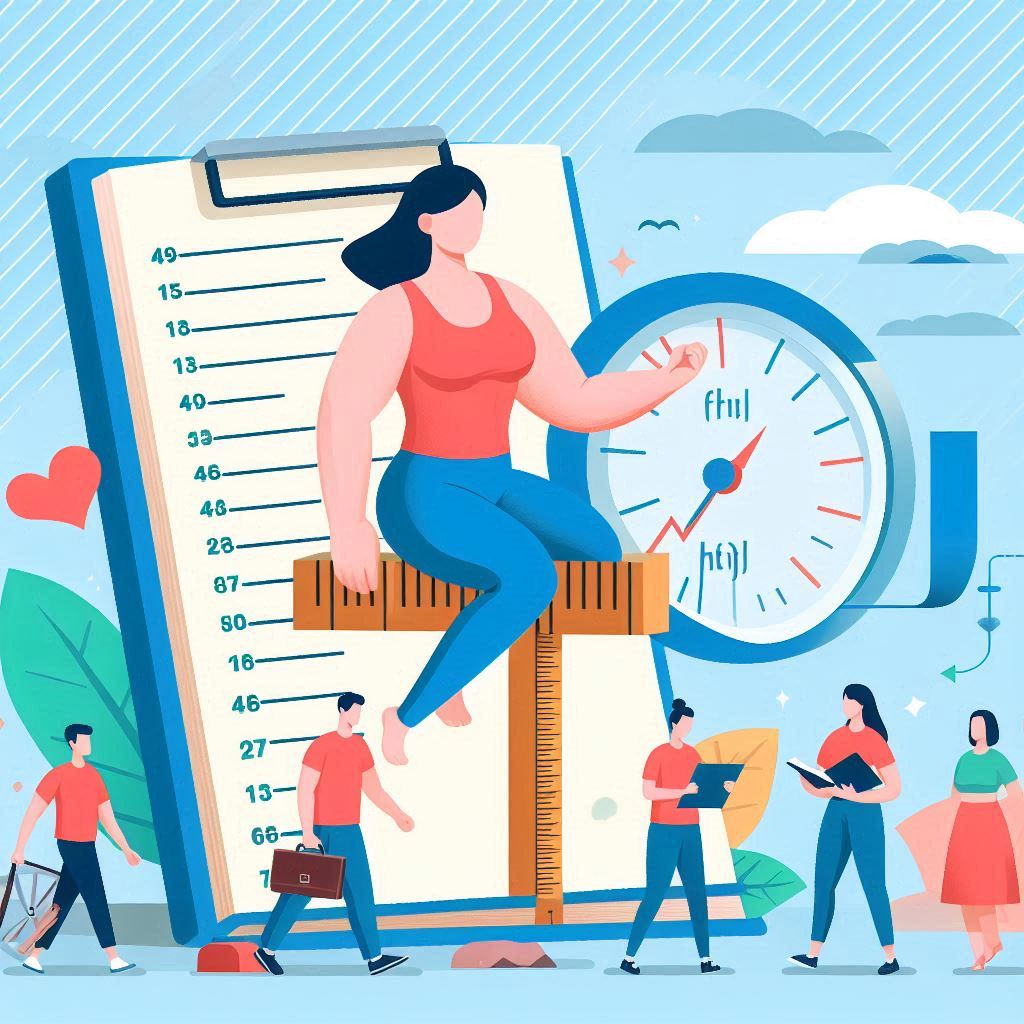
Height and weight charts are valuable for several reasons:
Health Monitoring
Regularly tracking your weight can help you detect patterns or changes that may indicate a health issue. For example, sudden weight gain might be a sign of water retention or an underlying health problem.
Early Detection of Health Issues
By using a height and weight chart, you can catch potential health problems early. For instance, if you’re consistently gaining weight and moving into the overweight category, it might be time to make lifestyle changes.
Guidance for Healthy Weight Management
These charts provide a clear reference point for setting weight management goals. Knowing your ideal weight range can help you make informed decisions about your diet, exercise, and lifestyle.
Motivation and Accountability
Seeing your progress on a chart can be motivating. Whether you’re trying to lose weight or maintain your current weight, tracking changes can keep you focused and committed to your goals.
Common Misconceptions About Height and Weight Charts
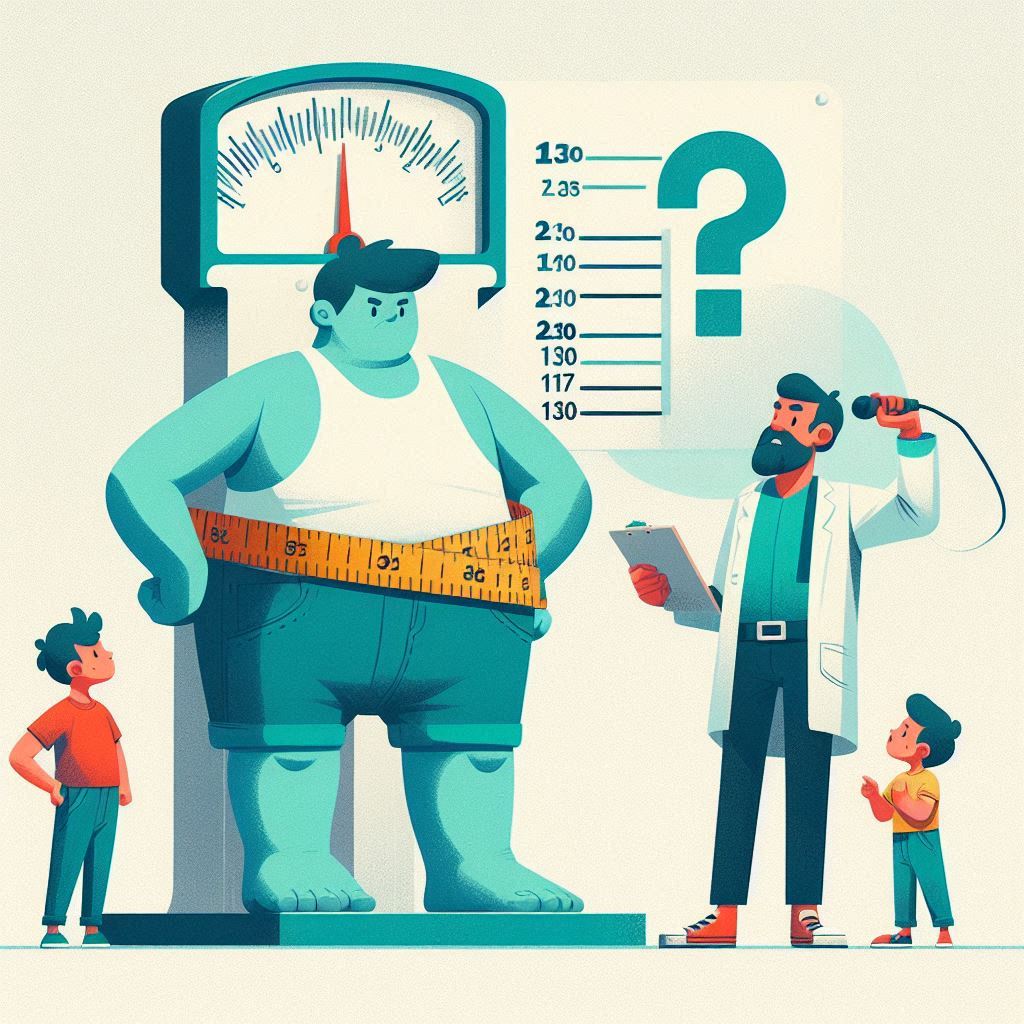
Despite their usefulness, there are several misconceptions about height and weight charts that can lead to misunderstandings about health.
Misconception 1: The Chart Is One-Size-Fits-All
Height and weight charts are general guidelines. They do not account for individual differences in muscle mass, bone density, and overall body composition. Always consider additional health metrics and consult with healthcare professionals.
Misconception 2: Muscle Weighs Less Than Fat
This is a common myth. In reality, muscle is denser than fat, meaning a pound of muscle takes up less space than a pound of fat. Therefore, someone with a higher muscle mass may weigh more but have a lower body fat percentage.
Misconception 3: BMI Is the Only Measure of Health
While BMI is a useful tool, it does not measure overall health. It’s important to look at other factors, such as physical activity, diet, and other health metrics like waist-to-hip ratio and body fat percentage.
Misconception 4: Weight Alone Defines Health
Weight is just one aspect of health. Fitness level, diet, mental health, and overall lifestyle are equally important. A comprehensive approach to health considers all these factors.
Additional Tips for Maintaining a Healthy Weight

Maintaining a healthy weight is a lifelong commitment. Here are some additional tips to help you stay on track:
Stay Active
Regular physical activity is key to maintaining a healthy weight. Find activities you enjoy, whether it’s walking, swimming, cycling, or dancing, and incorporate them into your routine.
Aim for at least 30 minutes of moderate activity most days of the week. Additionally, try to include strength training exercises, like lifting weights or using resistance bands, twice a week to build muscle and boost your metabolism.
Monitor Your Diet
A balanced diet is essential for weight maintenance. Focus on whole foods like fruits, vegetables, lean proteins, and whole grains.
Limit your intake of processed foods, sugary snacks, and high-calorie beverages. Remember that portion control is important; even healthy foods can contribute to weight gain if eaten in large amounts.
Mindful Eating
Practicing mindful eating can help you avoid overeating. Pay attention to your hunger and fullness cues, eat slowly, and enjoy each bite. Avoid distractions like watching TV or using your phone during meals, as these can lead to mindless eating.
Set Realistic Goals
When setting weight goals, make sure they are realistic and achievable. Losing 1-2 pounds per week is a healthy and sustainable rate of weight loss.
Avoid fad diets or extreme measures, as they often lead to temporary results and can be harmful to your health.
Stay Hydrated
Drinking enough water is crucial for overall health and can also support weight management. Sometimes, thirst is mistaken for hunger, leading to unnecessary snacking. Aim to drink at least 8 glasses of water a day, and more if you’re physically active.
Get Enough Sleep
Sleep plays a vital role in weight management. Lack of sleep can disrupt hormones that control hunger and appetite, leading to overeating and weight gain.
Aim for 7-9 hours of quality sleep each night. Establish a consistent sleep routine, limit screen time before bed, and create a relaxing bedtime environment to improve your sleep quality.
Manage Stress
Chronic stress can lead to weight gain, particularly around the abdomen. Stress triggers the release of cortisol, a hormone that increases appetite and cravings for high-fat, sugary foods.
Find healthy ways to manage stress, such as exercise, meditation, deep breathing exercises, or spending time in nature.
Regular Check-Ups
Regular medical check-ups can help you monitor your weight and overall health. Your healthcare provider can offer personalized advice based on your health history and help you stay on track with your weight goals. They can also screen for conditions like thyroid disorders or diabetes, which can affect your weight.
Long-Term Weight Maintenance
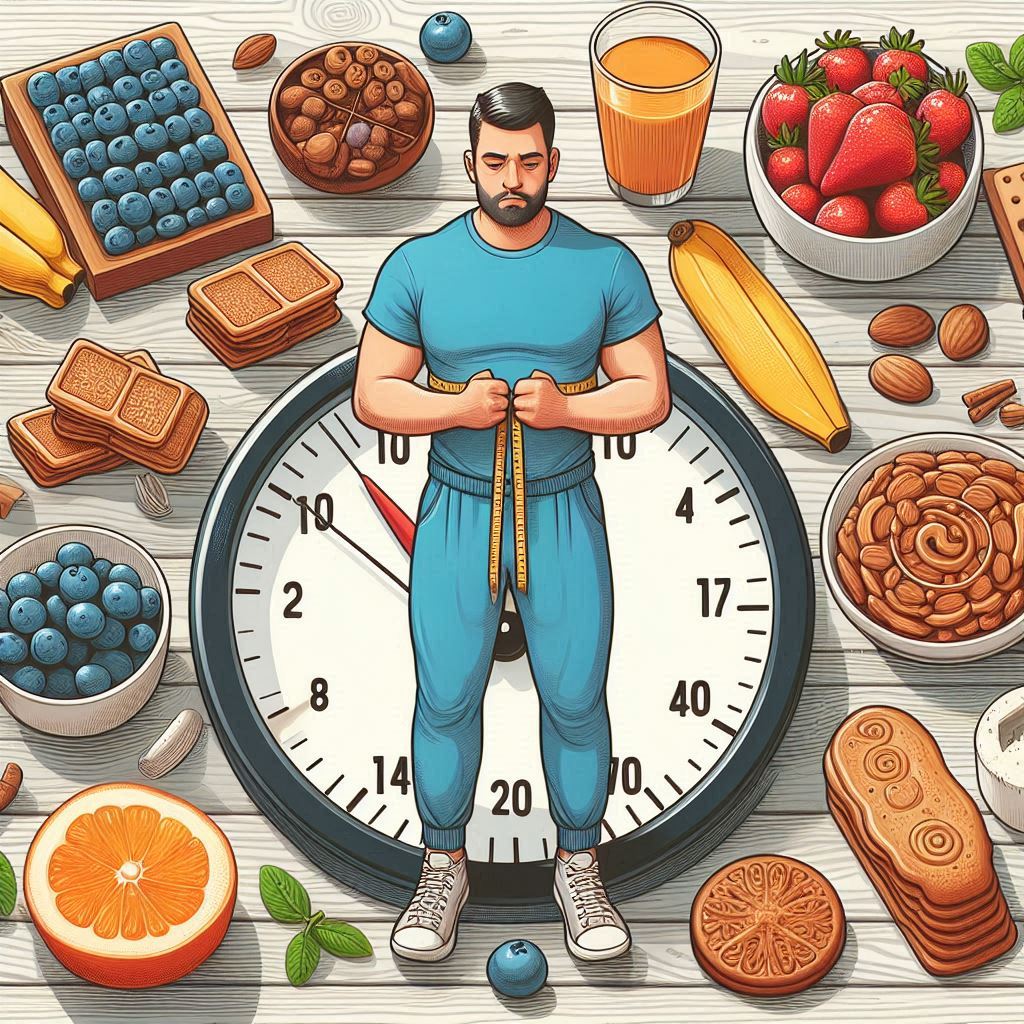
Maintaining your weight after reaching your goal can be challenging. It requires ongoing effort and lifestyle changes. Here are some tips to help you maintain your weight long-term:
Consistency Is Key
Consistency in your diet and exercise routine is crucial for long-term success. It’s okay to indulge occasionally, but make sure these are exceptions, not the rule. Stick to your healthy eating and exercise habits most of the time to keep the weight off.
Continue to Set Goals
Even after reaching your weight goal, continue setting new health and fitness goals to stay motivated. These can include improving your strength, flexibility, or endurance, or trying new activities like hiking or joining a sports team.
Stay Connected
Support from friends, family, or a community can help you stay on track. Join a fitness group, participate in online forums, or work with a personal trainer to keep yourself motivated and accountable.
Monitor Your Weight Regularly
Regularly weighing yourself can help you catch small weight gains before they become significant. However, don’t become obsessed with the scale.
It’s normal for your weight to fluctuate slightly from day to day. Pay attention to overall trends rather than daily changes.
Celebrate Your Success
Take time to celebrate your achievements, both big and small. Reward yourself for reaching milestones, whether it’s treating yourself to a new outfit, enjoying a relaxing day out, or indulging in a special meal. Recognizing your hard work can boost your motivation to continue maintaining your healthy lifestyle.
FAQs of Height and Weight Chart
What is a height and weight chart?
A height and weight chart helps you determine if your weight is proportionate to your height based on age, gender, and other factors.
How do I use a height and weight chart to find my ideal weight?
Simply locate your height on the chart, then find the corresponding weight range that is considered healthy or ideal for that height.
Are height and weight charts accurate for everyone?
While charts provide a general guideline, they may not account for factors like muscle mass or body composition. It’s best to use them in conjunction with other health indicators.
What should I do if my weight falls outside the recommended range on the chart?
Consult with a healthcare professional to assess your overall health and get personalized advice on achieving a healthy weight.
Can height and weight charts be used for children and teenagers?
Yes, there are specific charts for children and teenagers that account for growth patterns and developmental stages.
How often should I check my weight using the height and weight chart?
Regularly tracking your weight, such as monthly or quarterly, can help you monitor changes and maintain a healthy weight.
Are there any limitations to using height and weight charts?
Yes, charts do not consider factors like body fat percentage, muscle mass, or overall fitness. They should be used as part of a broader health assessment.
Can height and weight charts help with weight loss or gain plans?
They can provide a target range for your weight, but for a tailored plan, it’s best to combine this information with advice from a healthcare or fitness professional.
Do different height and weight charts provide different ranges?
Charts may vary slightly based on the source and methodology, but they generally offer similar ranges for healthy weights.
How can I find a reliable height and weight chart?
Look for charts created by reputable health organizations or consult with a healthcare provider to ensure you are using a reliable and accurate resource.
Conclusion
Using a height and weight chart is a simple yet effective way to monitor your health. By understanding where you fall on the chart and considering other important health metrics like BMI, waist-to-hip ratio, and body fat percentage, you can take control of your health.
Whether you’re aiming to lose weight, gain weight, or maintain your current weight, setting realistic goals and tracking your progress is key.
It’s important to remember that weight is just one aspect of health. A holistic approach, which includes a balanced diet, regular exercise, proper hydration, adequate sleep, and stress management, is crucial for overall well-being.
Regular check-ups with your healthcare provider can help you stay on track and address any health concerns early.
Incorporating these habits into your daily life will not only help you maintain a healthy weight but also improve your overall quality of life. By taking a proactive approach to your health, you can enjoy a happier, healthier future.
With the right tools and mindset, you can achieve and maintain your ideal weight. Use the information in this guide to set yourself up for success, and remember that small, consistent steps lead to lasting results.




